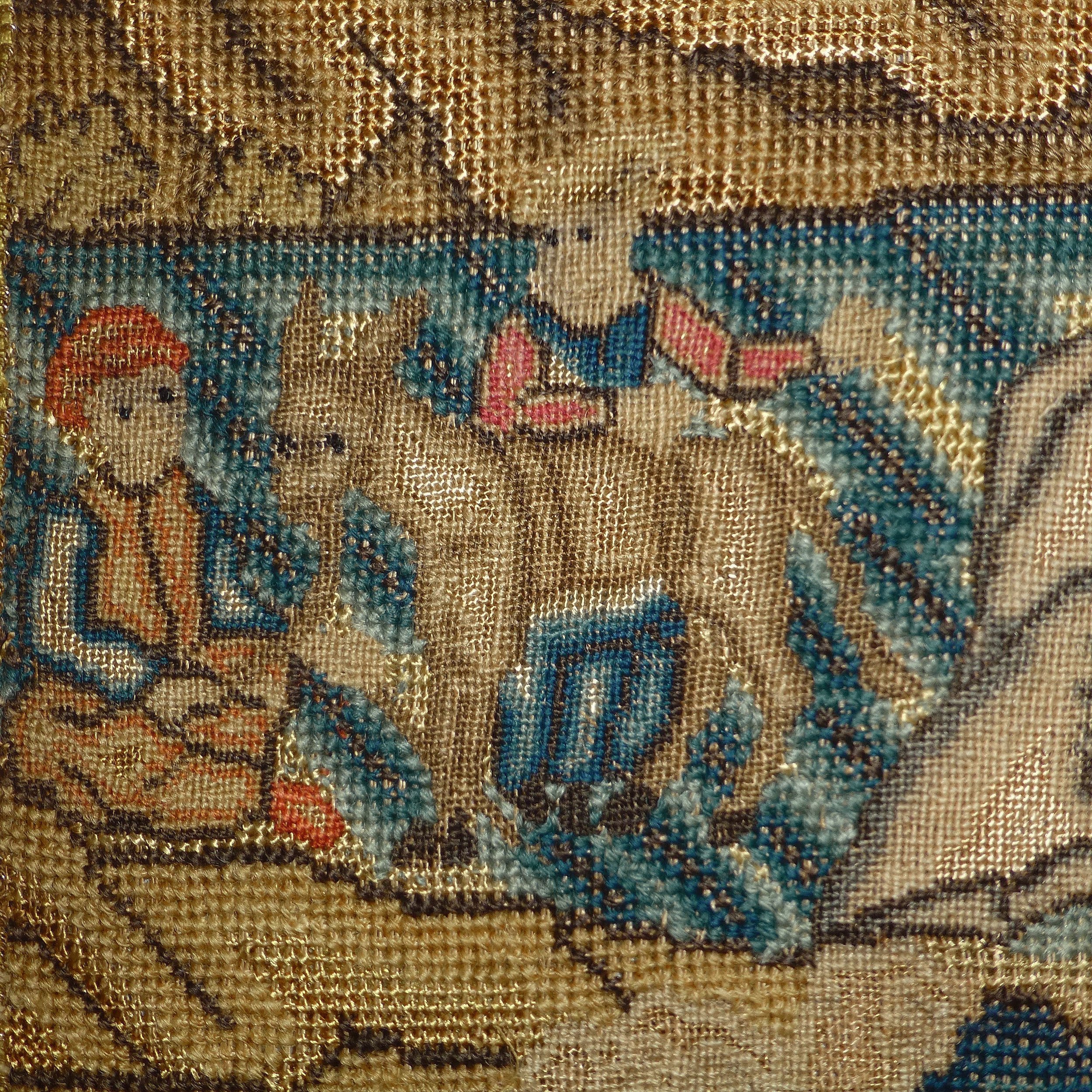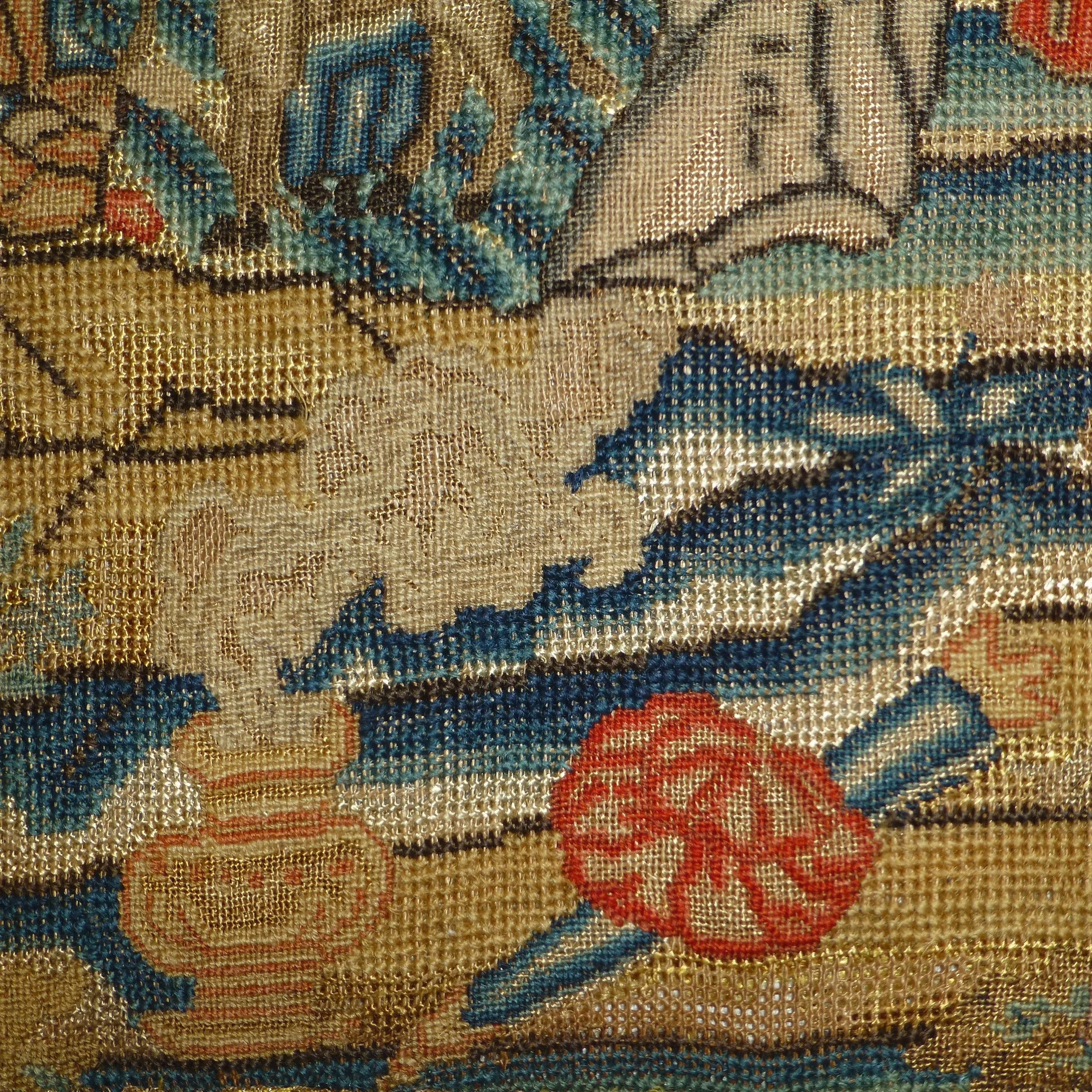An early 18th century pier glass
England, circa 1700-1710.
The gilt wood and gesso frame, with foliate decoration, set with an English needlework panel of the same period above a bevelled mirror plate. The canvas worked in tent stitch in silk and wool with a depiction of the Sacrifice of Isaac, the angel staying Abraham’s hand - he having proved his faith with the offer of the life of his son - and the lamb destined to replace Isaac leaping in at the right. The subject taken from Genesis, chapter 22…
10 And Abraham stretched forth his hand, and took the knife to slay his son.11 And the angel of the Lord called unto him out of heaven, and said, Abraham, Abraham: and he said, Here am I.12 And he said, Lay not thine hand upon the lad, neither do thou any thing unto him: for now I know that thou fearest God, seeing thou hast not withheld thy son, thine only son from me.13 And Abraham lifted up his eyes, and looked, and behold behind him a ram caught in a thicket by his horns: and Abraham went and took the ram, and offered him up for a burnt offering in the stead of his son.
A common subject in English needlework of the 17th and early 18th centuries, this version follows the design of an engraving by Crispijn van de Passe (1594/1595-1670), which was itself derived from a painting by Maerten de Vos (1532-1603). An earlier treatment of the same de van de Passe engraving, which is reproduced below, may be seen in a needlework panel in the collection of the Metropolitan Museum of Art, New York, accession number: 64.101.1306
The mirrored plate replaced or re-silvered.
The needlework 51cm (20”) high and 46.8cm (18⅜”) wide.
The pier glass 82.8cm (32⅝”) high and 52.5cm (20⅝”) wide.












